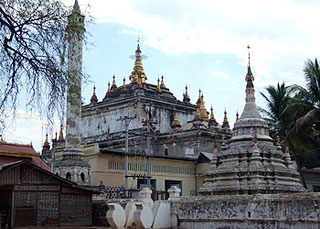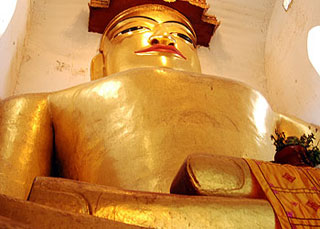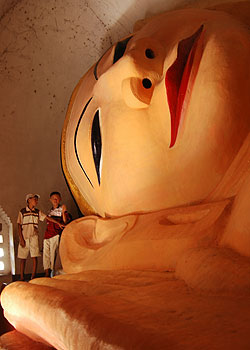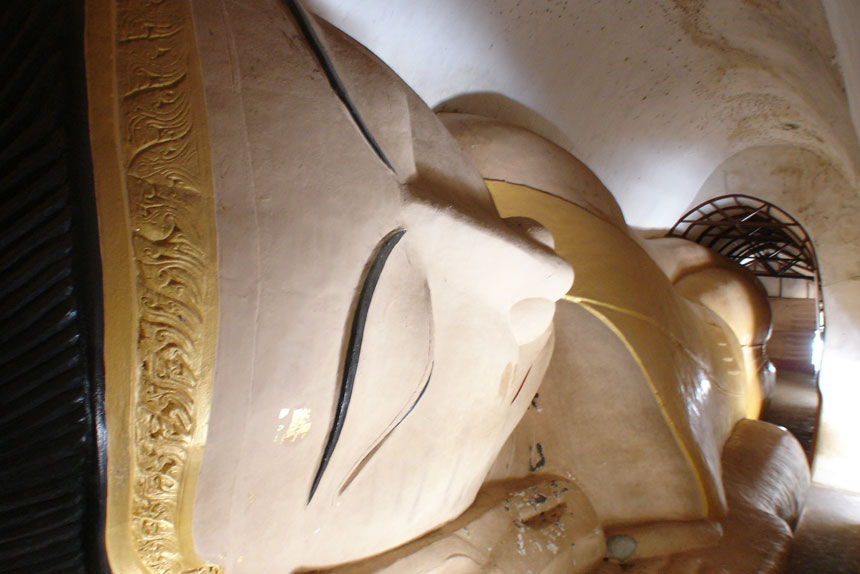The Manuha temple is on the right side of the main road going south from Bagan. and right in Myinkaba village. King Manuha’s inscription says that it was built in AD 1067 about a decade after the Mon king was brought to Bagan. The name of the temple was given after the name of the captive King Manuha. Traditionally. Manuha was considered one of the earliest temples at Bagan. Legend says that it was built by a Mon king named. Manuha. who had been defeated and brought to Bagan as a captive by Anawrahta. In Bagan the kings and queens. the princes and princesses all built pagodas large and small.
Manuha the Mon king. detained in Bagan. also wanted to build a temple of his own. He did not have ready money in cash. so he sold his priceless Manaw Maya jewel to a rich merchant of Myinkaba and obtained six cartloads of pure silver. He used this to build the impressive Manuha Temple. It is still a place of worship for the Buddhists.
 |
 |
Structure
The temple is a series of reduplicated squares with the lower storey larger than the upper. There is a large seated Buddha image. 46 feet high. with the right hand touching the earth. Two smaller Buddha images. each 33 feet high. flank this large image on each side. For devotees there is barely room to sit down to pray. the large image and the two smaller ones filling up nearly all the space in the cramped interior. Some say that Manuha purposely put the images in such cramped positions to denote his feelings under detention in Bagan. There is also a huge reclining Buddha image 90 feet long. in an adjoining chamber at the back. with the head pointing to the north which symbolises the dying Buddha about to enter Parinibbana. the Demise.
 |
 |
This image too is in a very cramped enclosed place and not in an open shed like the reclining Buddha image in Bago.At one time visitors could climb a tiny. winding stairway built into one of the side walls and view through an open aperture. the head of the huge seated Buddha. One can climb to the top of this pagoda via the stairs at the entrance to the reclining Buddha chamber. at the back of the temple. Through a window you can then see the face of the sitting Buddha. and from up at this level you’ll realize that the gigantic face. so grim from below. has an equally gigantic smile. During the earthquake of 1975. the central roof collapsed. badly damaging the largest. seated Buddha. which has since been repaired.
An outdoor corner of the temple compound is dedicated to Mt Popa’s presiding nats. Mae Wunna and her sons Min Lay and Min Gyi. Devotees of Manuha Paya celebrate a large paya pwe (or pagoda festival) on the full moon of Tabaung (which falls between February an March. depending on the Lunar Calendar).
A short path leads past two recent statues of King Manuha and his wife. Queen Ningala Devi to Nagayone.
Nearby Attractions
NANPAYA
Built in the 12th Century this attractive pagoda is a combination of sandstone and brick. particularly noteworthy is the elegant perforated stone windows.

